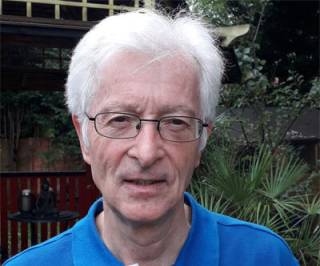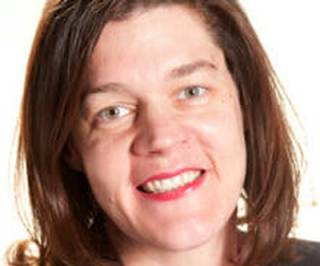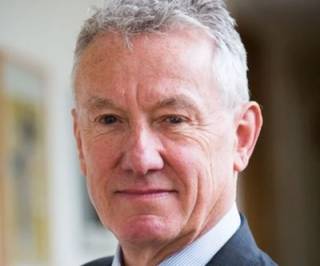Dialysis and Physiology

Can your kidneys make it to Mars and back?
UCL scientists will examine what impact spaceflight has on kidneys, as part of a unique collaboration with researchers at KBR and NASA's Ames Research Center in Silicon Valley, California.

Space mice may offer clues to why astronauts get kidney stones
Test subjects from International Space Station may shed light on link between space travel and high incidence of painful condition.
Our work

Our experts

Prof. Andrew Davenport (Head)

Dr Stephen Ben Walsh (Deputy Head)

Dr Jennifer Cross


Dr Edward Debnam




Dr Shabbir Moochhala



Dr Chris Laing
Selected Publications
- Davenport A. (2023). Calcium balance in peritoneal dialysis patients treated by continuous ambulatory peritoneal dialysis (CAPD) and automated peritoneal dialysis (APD) cyclers. Journal of Nephrology.
- Davenport A. (2023). Differences in prevalence of reduced and low bone mineral density between lumbar spine and femoral neck in peritoneal dialysis patients using dual-energy X-ray absorptiometry (DXA). PERITONEAL DIALYSIS INTERNATIONAL.
- Vareesangthip K, Fan S, Davenport A. (2023). Is the measurement of tissue advanced glycosylation products by skin autofluorescence associated with mortality in patients treated by peritoneal dialysis? Journal of Nephrology, 36 (1), 217-224.
- Davenport A. (2023). Survey of food offered to United Kingdom haemodialysis patients attending for dialysis sessions in main dialysis centres and satellite units and international comparison. Renal Replacement Therapy, 9 (1), 10.
- Goodlad C, Davenport A. (2023). The changing pattern of COVID-19 infection in haemodialysis and peritoneal dialysis patients. Artif Organs.
- Davenport, A. (2023). Why is Intradialytic Hypotension the Commonest Complication of Outpatient Dialysis Treatments? Kidney International Reports, 8 (3), 405-418.
- Li Y, Luo L, Davenport A, et al. (2022). A graphene nanoplatelet-polydopamine molecularly imprinted biosensor for Ultratrace creatinine detection. Biosensors and Bioelectronics, 216
- Vilar E, Kamal RMK, Davenport A, et al. (2022). A multicenter feasibility randomized controlled trial to assess the impact of incremental versus conventional initiation of hemodialysis on residual kidney function. KIDNEY INTERNATIONAL, 101 (3), 615-625.
- Davenport A. (2022). Application of the Clinical Frailty Score and body composition and upper arm strength in haemodialysis patients. CLINICAL KIDNEY JOURNAL, 15 (3), 553-559.
- Jaques DA, Henderson S, Davenport A. (2022). Association between bone mineral density at different anatomical sites and both mortality and fracture risk in patients receiving renal replacement therapy: a longitudinal study. Clinical Kidney Journal, 15 (6), 1188-1195.
- Hendra H, Sridharan S, Farrington K, Davenport A. (2022). Characteristics of Frailty in Haemodialysis Patients. Gerontology and Geriatric Medicine, 8.
- Guedes M, Vernooij RWM, Davenport A, et al. (2022). Clinical performance, intermediate and long-term outcomes of high-volume hemodiafiltration in patients with kidney failure. SEMINARS IN DIALYSIS, 35 (5), 420-426.
- Davenport A. (2022). Comparison Between the Physical Performance Test and the Clinical Frailty Score in Adult Patients With Chronic Kidney Disease Treated by Haemodialysis. Gerontology and Geriatric Medicine, 8
- Davenport A. (2022). Comparison of frailty, sarcopenia and protein-energy wasting in a contemporary peritoneal dialysis cohort. PERITONEAL DIALYSIS INTERNATIONAL, 42 (6), 571-577.
- Hendra H, Sridharan S, Farrington K, Davenport A. (2022). Determinants of active energy expenditure in haemodialysis patients. Clinical Physiology and Functional Imaging, 42 (5), 303-307.
- Blair C, Slee A, Davenport A, et al. (2022). Developing an Evidence and Theory Based Multimodal Integrative Intervention for the Management of Renal Cachexia: A Theory of Change. Healthcare, 10 (12).
- Blair C, Shields J, Mullan R, Davenport A, et al. (2022). Exploring the lived experience of renal cachexia for individuals with end-stage renal disease and the interrelated experience of their carers: Study protocol. PLoS ONE, 17 (11).
- Davenport, A. (2022). Frailty, appendicular lean mass, osteoporosis and osteosarcopenia in peritoneal dialysis patients. Journal of Nephrology, 35 (9), 2333-2340.
- Canaud, B., Davenport, A., Golper, T.A., Raimann, J.G. (2022). Hemodiafiltration in 2022: Introduction to the symposium. Seminars in Dialysis, 35 (5), 377-379.
Funding and Parternships
The UCL Dialysis & Physiology Centre is one of the partners in the European Horizon 2020 funded CONVINCE trial comparing high volume on-line haemodialfiltration with high flux haemodialysis, and the lead centre for the STITCHED mechanistic study nested within the UK H4RT study, again comparing high volume on-line haemodialfiltration with high flux haemodialysis.
 Close
Close

